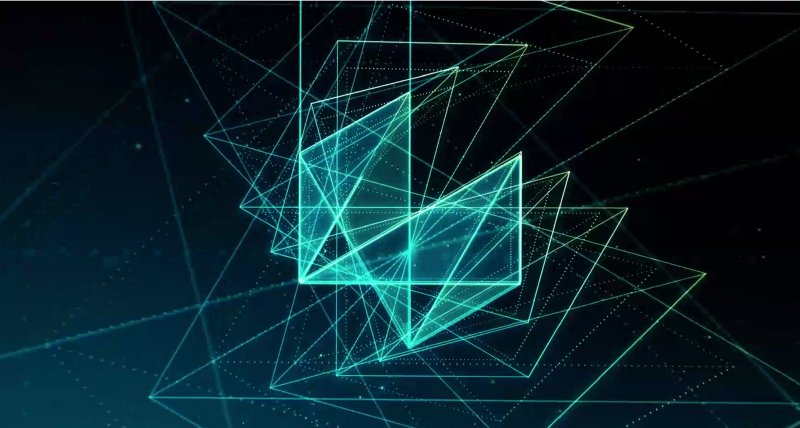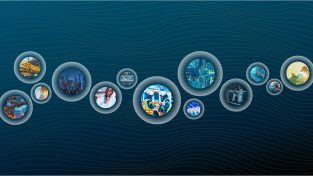Combining measurements and imagery, laser scanners can capture any site, for example plants, buildings or crime scenes, to create a 3D digital model. The resulting model can be used for design and comparison purposes, to ensure site safety in inhospitable environments or as evidence in a criminal case, capturing every detail with to-the-millimeter accuracy. Hans Tuexsen, Terrestrial Laser Scanning Business Director, and Faheem Khan, Vice-president of survey solutions at Leica Geosystems, discuss how recent laser scanning technology in the last 12 months combine one-touch operation with portability and speed to deliver high levels of accuracy, automation and the ability to create 3D environments in a matter of minutes.
BK: Combining measurements and imagery, laser scanners can capture any site, for example, plants, buildings, or crime scenes, to create a 3D digital model. The resulting model can be used for design and comparison purposes to ensure site safety and inhospitable environments, or as evidence in a criminal case, capturing every detail with to-the-millimeter accuracy.
Welcome to HxGN Radio. My name is Brian. And joining me today are Hans Tuexsen, Terrestrial Laser Scanning business director, and Faheem Khan, vice president of Survey Solutions at Leica Geosystems. They will be discussing how recent laser scanning technology in the last 12 months combined one-touch operation with portability and speed to deliver high levels of accuracy, automation, and the ability to create 3D environments in a matter of minutes. Gentlemen, thanks for joining us.
FK: You’re welcome.
HT: Happy to be here.
BK: Appreciate it. All right, well, Faheem, let’s talk a little about laser scanning, and tell me how it fits into 3D reality capture.
FK: Laser scanning is a very integral part of the reality capture portfolio, the 3D reality capture portfolio, that is increasingly a dominant force in the industry. Laser scanning was something that we commercialized over 15 years ago as a technology that really, I think, spearheaded this 3D documentation and surveying experience that our customers are in. It’s a technology that is now very well accustomed to in the workflows that our customers have, and it’s one of the important components of the 3D reality capture basket. The other sort of technologies that our customers deploy range from mobile mapping systems that are mounted on vehicle or moving platforms, airborne systems, and, of course, the recently introduced BLK360 has further revolutionized that experience of deploying laser scanning technology for 3D reality capture purposes. That’s on the sensor side, and the software solution sort of extends into the same experience.
BK: Good, good, excellent. So how is Hexagon democratizing reality capture?
FK: Hexagon has taken a leading role in democratizing this technology and really making it available for the masses. I would say it’s done in two ways. You can classify this into the collection phase of a project and the consumption phase of a project. From a collection prospective, the introduction of the BLK 3D product certainly set a benchmark in the industry in terms of size, weight, ease of use. Portability made this technology massively available to data producers. With the ease of use of that push-button solution, the 1 kg system sort of unique and a world’s first, more possibilities are now available to consumers of the data. And then to enable that consumption democratization, we’ve extended software solution workflows to connect multiple industries, multiple domain experts, to be able to leverage the 3D reality information that’s captured to address their business needs. So if I’m an architect, I can very quickly take a 3-dimensional document off my facility, carry a design. If I’m a police officer, I can very quickly preserve the crime scene, carry out an investigation. If I’m a surveyor, I can very easily, at the push of a button, compute volumetric information that would have taken hours in the past. So, that has really revolutionized this domain tremendously.
BK: So, it’s faster and more accurate, essentially.
FK: Faster, accurate, easier.
BK: Oh, nice. Love that. Hans, how are the new reality capture solutions digitalizing the workflows?
HT: Our reality capture solutions create digital twins of reality. In other words, a digital 3D point cloud—that’s what we collect—we present the as-built situation of the captured scene. And in this digital representation of the reality, any kind of measurements or computations can be made. This includes distance measurements, volume calculations, clash detection, and so on. In the past, many of these tasks required a lot of analog measurements, like tape measurements and so on, and they are even not possible at all.
BK: How is reality capture opening opportunities for new industries and professionals?
HT: Traditionally, we mainly address the civilian market with our products. With this latest introduction of our reality capture solutions, professionals from many other industries benefit from this technology. The main driving factor for the broad adoption of our solutions are ease of use, productivity, and portability of the equipment. So automatic workflows in the field and in the office make this technology really attractive for everybody who is interested in 3D data.
BK: How are latest reality-capture solutions improving efficiency and productivity?
HT: Efficiency and productivity were the main goals when we designed and developed our latest generation of reality capture products. The Leica RTC360 is the fastest 3D laser scanner in the market. With the laser speed of 2 million points per second and its unique spherical camera system, the RTC360 captures a complete 3D scan and a panoramic HDR image in less than two minutes. But there’s more really unique and efficient technology in this product. The visual inertial system automatically tracks the movement from station to station, leading to an automatic pre-registration of the field. Leaving the field to final registration and reporting in the office is only a click away. In the office, it’s as easy as drag, drop, done.
BK: Very nice, very impressive. So, tell me about a specific example, then, how customers are benefiting from this technology with some of their various projects.
HT: I have a few real customer examples I can report about. For example, Apply Capnor, a company in Norway, working in the onshore and offshore plant industry, for them, this technology became really part of the daily business. Especially in the offshore environment, speed, data quality, and safety of the workers are non-negotiable. Not at all. No disturbances of the daily operation or expensive shutdown are accepted in this environment. Also, a minimum of time spent on site equals to a minimum of safety issues, of course. And Apply Capnor invested into several RTC360 systems. Speed and reliability were the key to winning this account. Another example is, for example, Enel, an electricity company in Italy, who have invested in a whole fleet of our reality capture products. For them, speed and simplicity of the system were the main reasons for the investment in our products. Also for them, fast and reliable data capturing is the foundation for the documentation of their facilities. This means scanning of hundreds or even thousands of electrical cabinets in a single facility. In addition, high quality of imaging for 3D documentation was another strong argument for the RTC360.
BK: Nice. Excellent. Well, good to hear those great responses. And I like what they were saying, too, about how important it is for safety and speed and efficiency and also just accuracy.
HT: Thank you very much.
BK: Thank you for that information. Faheem, how are the new reality capture solutions leveraging other state-of-the-art technologies?
FK: There are many ways in which we leverage technologies that we hear about every day, and there’s definitely two types. I mean, there are technologies that are coming in the future, in the horizon. There are technologies that are presently available that we already see customers taking full advantage of. I can give you a few examples. First is artificial intelligence. We hear about this all the time. We hear about how artificial intelligence is shaping our lives. It’s also making significant impacts in reality capture workflows. I will that say the investments made in AI machine learning is starting to really pay dividends. Customers can turn to Leica Pegasus:Manager, a software product that processes mobile mapping data, to run the routine of classifying the dataset automatically and be able to extract features with less inaccuracies and with higher speed. Those are some of the benefits and dividends that AI produced for us.
VR technology, AR technology, we see customers leveraging these technologies to conduct site training, virtual site visits. It’s not a marketing tool. It’s starting to provide some mainstream value to public safety agencies, as an example. Cloud technology has been a major enabler for a lot of the workflows. We offer a product called Leica TruView Cloud, which allows our customers to collect the data from the field and be able to consume this in downstream applications in minutes. That TruView is a lightweight—reality-capture data tends to be very rich in information, but this richness comes with the size, a sort of penalty—TruView is a lightweight representation of that reality. And leveraging cloud, leveraging this lightweight technology, leveraging also edge computing, to make this light allows us to connect with lots of downstream applications. One example is the connection that we have with Hexagon PPM’s SDx product, which allows owner operators running their facilities to be safer, more efficient in really executing their work processes. There are lots of possibilities. And these are not technologies that are things that we read about in magazines and think about, “Great. Wouldn’t it be great if we could use them?” They’re actually being applied every day.
BK: Oh, that’s wonderful.
FK: Yes, it’s exciting.
BK: Good, good. Like you said, not theoretical, not the ideas, but actually getting out there. Very impressive technology. And it’s neat to see how this just continues to grow and continues to make things so much better in so many ways. Where do you think that reality capture’s going to be going in the future, and, well, let’s start with that. Where do you think it’s going to go in the future?
FK: It’s only getting better. If you look at the progress that has been made in this industry—I mean, Hans touched on the performance leap that we have seen. A project that would have taken a week to complete, maybe a month to complete, became a week a few years ago. And the project that takes a week to complete now finishes in a day. I mean, that productivity leap is tremendous. And I think you can expect Hexagon to continue to drive this productivity gain that our customers can leverage and that productivity gain is sort of for the total project. It’s from collection to getting final actionable data that you can use to address that business case that you’re addressing, better quality of information. So, if I’m running a building construction project, I want to make sure that this slab is fabricated correctly. I want to know on-site whether that answer is available. You will turn to reality capture technology and give you that quality information. Again, productivity, end-to-end productivity. Speed drives this, automation drives this, simplicity of workflow drives this. This is something that we think about. Making reality capture technology as simple as using an iPhone is perhaps one of the goals that we have. And I can say that you can judge from the recent deployment of technology, it’s definitely heading in the right direction. So it’s exciting.
BK: That’s fantastic. Yeah, very exciting. It really is. Well, thank you both. I really appreciate your time. This was great information and good to hear how everything’s going.
FK: Thank you.
BK: Appreciate it. All right. Well, for more information, if you want to learn all about what we just talked about today, visit leica-geosystems.com. And, of course, to learn even more and to listen to additional episodes, head over to hxgnspotlight.com. And thank you very much for joining us here on HxGN Radio.
















